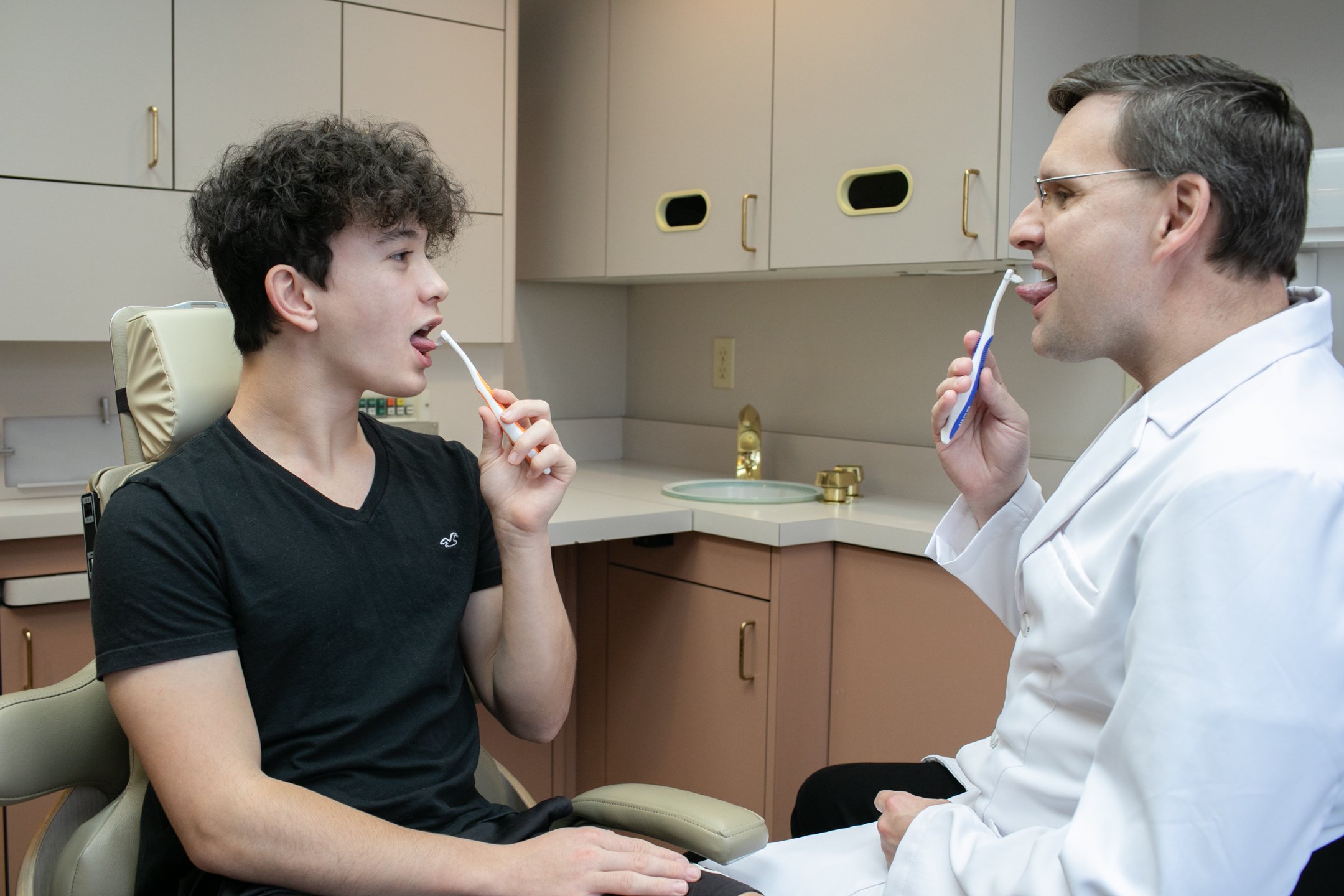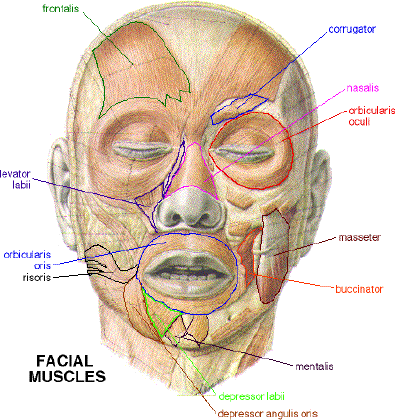Does your tongue affect your orthodontic treatment?
Myofunctional Therapy is Another Option
Oral Myofunctional Therapy is another method used for eliminating a tongue thrust. It is an exercise-based treatment that teaches patients how to use their tongue and facial muscles normally.
An Oral Myofunctional Therapist (OMT) can be an instrumental figure in helping a patient learn to re-train the facial muscles and eliminate a tongue thrusting habit. OMTs are skilled at helping children and adults gain control over muscular habits, including those involved in a tongue thrust. For children and adults who struggle with tongue thrusting, stopping the habit is not always easy. This is because all of the muscles of the face and mouth have been programmed over the course of many years. The person’s body does not know how to use the tongue and facial muscles correctly, and needs help.
A consultation with an oral myofunctional therapist can be very valuable. If the muscles are not re-trained, your orthodontic treatment and final result may be compromised.
Besides affecting your braces, a tongue thrust can also have a lasting negative impact on a person’s general health, speech, dental health, swallowing and breathing throughout life.
Braces Move Teeth
Braces, Invisalign, SureSmile and other orthodontic appliances work by applying a light, constant pressure to the teeth and moving them slowly over a period of time. The pressure on each tooth causes the tissues surrounding the tooth to stretch and become temporarily mobile. Eventually, the bone fills in around each of the teeth, solidifying them into their new positions.
Muscles Move Teeth Too!
The muscles of our mouth and face are nature’s living orthodontic equalizers. They can have a great influence on the movement and position of our teeth.
Teeth are ever-changing, so they can be altered and moved by muscular influence from the jaws, lips, tongue, and cheeks.The same forces used by orthodontics can also be used by the tongue to move teeth.
Ideally, a balance of forces exists between the lips and cheeks on the outside of the teeth, and the tongue on the inside of the teeth.
Any imbalances affect the growth, comfort, and position of the teeth and jaw.
The most significant type of muscular imbalance to affect the oral and facial structures is called a “tongue thrust” or “reverse swallow.”
Tongue Thrust
A tongue thrust occurs when the muscles for swallowing have learned to work together the wrong way. The tongue is very strong. When it constantly rests against the teeth and pushes forward during a swallow, it can cause the teeth to move.
If you have braces, a tongue thrust can be a problem because:
A tongue thrust can slow down your orthodontic treatment, keeping your braces on for a longer time.
A tongue thrust can make your teeth move again, after your braces are taken off.
A tongue thrust can make moving your teeth and closing spaces much more difficult for your orthodontist.
When the muscles of your mouth and face are not in balance, solving orthodontic problems is much more challenging.
Do I Have a Tongue Thrust?
There are many characteristics to look for in order to determine if you, or your child, have a tongue thrust. Below are 4 of the most common signs to recognize:
Mouth breathing is the most common sign. The mouth is open at rest, and the tongue is often forward or sticking out.
Speech Concerns, especially lisping, can be a sign of a tongue thrust. If there is difficulty pronouncing “T, D, N, and L” sounds, this is another indicator. General problems with articulation, rate of speech, and voice quality and clarity may also be present.
Sucking habits, past or present, can cause a tongue thrust to develop. The formation of the mouth and position of the tongue are changed by the thumb or finger during a sucking habit. Even if the child quits the habit, the damage caused to the function of the tongue, facial musculature, and other structures often still remains.
Open Bite having front or side teeth unable to bite together is an excellent sign of a swallowing dysfunction.
Using Face Muscles. In a normal swallowing pattern the tongue does all the ‘work.’ In a dysfunctional swallowing pattern, the lips and cheek muscles contract to create a vacuum effect to get the food, water, or saliva down the throat.
TMJ or Facial Pain. One symptom of a tongue thrust swallow is pain in the cheek muscles or pain in the jaw joint from frequent over use of these body parts.
What Can Be Done to Fix a Tongue Thrust?
Orthodontists have struggled over the years, fighting the strength of the tongue while trying to provide the best orthodontic treatment. Years ago orthodontists would install barbaric looking appliances to try to curb a tongue habit. Today, orthodontists from around the Seattle region refer to KenmoreMyo to treat tongue thrust swallowing. Dave will first assess the underlying causes of the tongue thrust swallow such as tongue tie, tongue space, oral habits, airway or breathing problems. Once underlying causes of the tongue thrust swallow are addressed your therapist will teach correct tongue posture, nasal breathing and correct swallowing patterns which are then habituated into your daily life.
This is what a normal swallow looks like:
This is what a tongue thrust swallow looks like:
Watch this video by Dr. Dan Hansen on the effects of tongue thrust swallow





